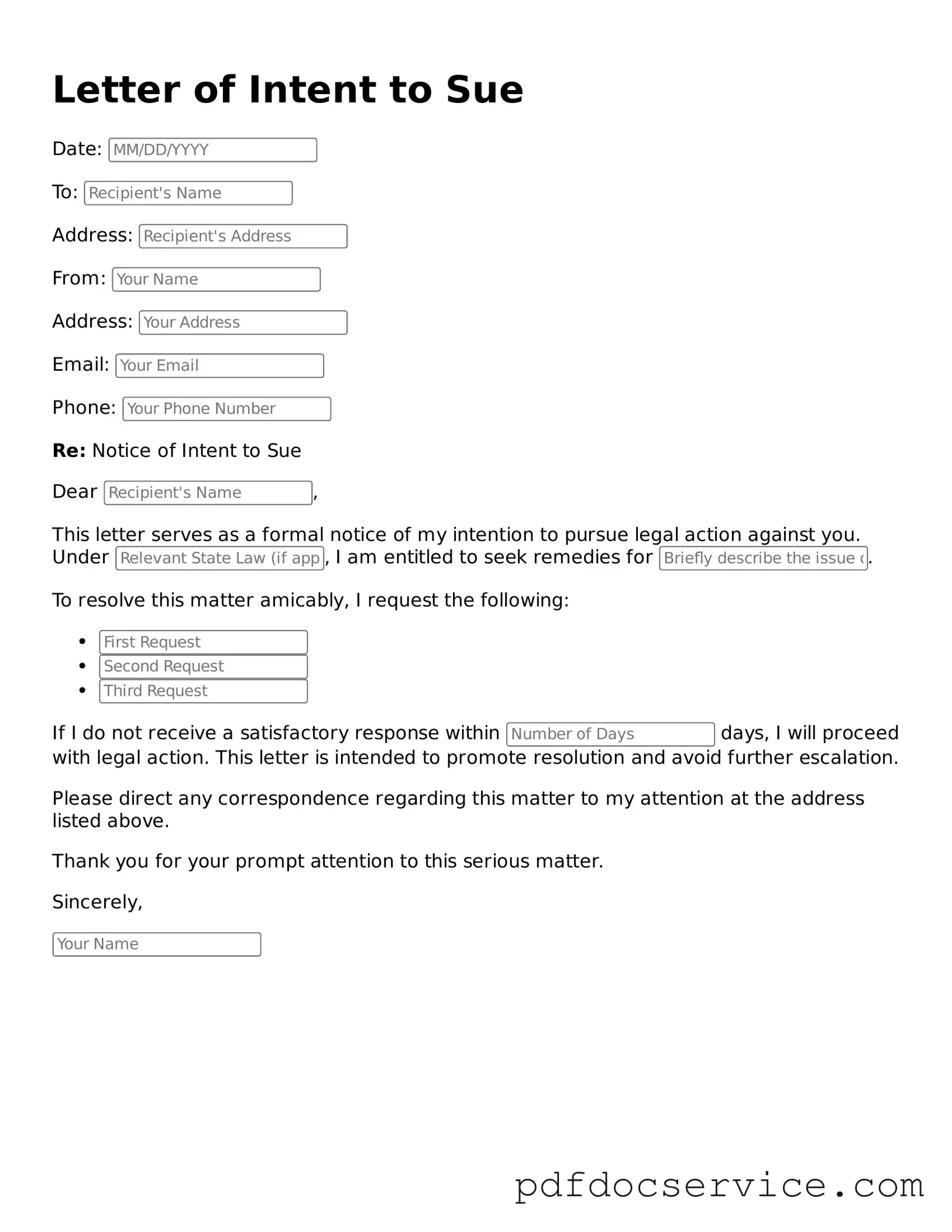What is a Letter of Intent to Sue?
A Letter of Intent to Sue is a formal document that notifies another party of your intention to take legal action against them. This letter serves as a warning, giving the recipient an opportunity to address the issue before a lawsuit is filed. It outlines the reasons for the potential lawsuit and the damages being sought.
When should I send a Letter of Intent to Sue?
You should consider sending this letter when you have a legitimate claim against someone and have made attempts to resolve the issue amicably without success. Common situations include disputes over contracts, personal injuries, or property damage. Sending this letter can sometimes prompt the other party to settle the matter without going to court.
What should be included in the Letter of Intent to Sue?
Your Letter of Intent to Sue should include the following key elements:
-
Your contact information and that of the recipient.
-
A clear statement of the facts leading to your claim.
-
The specific legal grounds for your claim.
-
The damages you are seeking.
-
A deadline for the recipient to respond or resolve the issue.
Be sure to keep the tone professional and factual, avoiding emotional language.
Do I need a lawyer to draft this letter?
While it is possible to draft a Letter of Intent to Sue on your own, consulting with a lawyer is highly recommended. A legal professional can help ensure that your letter is properly structured, includes all necessary details, and effectively communicates your position. This can increase the chances of a favorable response from the other party.
What happens after I send the Letter of Intent to Sue?
Once the letter is sent, the recipient has the opportunity to respond. They may choose to:
-
Resolve the issue through negotiation.
-
Ignore the letter, which may lead you to proceed with filing a lawsuit.
-
Respond with their own perspective or counterclaims.
If the matter is not resolved, you can then decide whether to file a lawsuit based on the response received.
Is a Letter of Intent to Sue legally binding?
No, a Letter of Intent to Sue is not legally binding. It is simply a notification of your intent to pursue legal action. However, it does document your position and may be used as evidence in court to show that you attempted to resolve the matter before escalating to a lawsuit.
